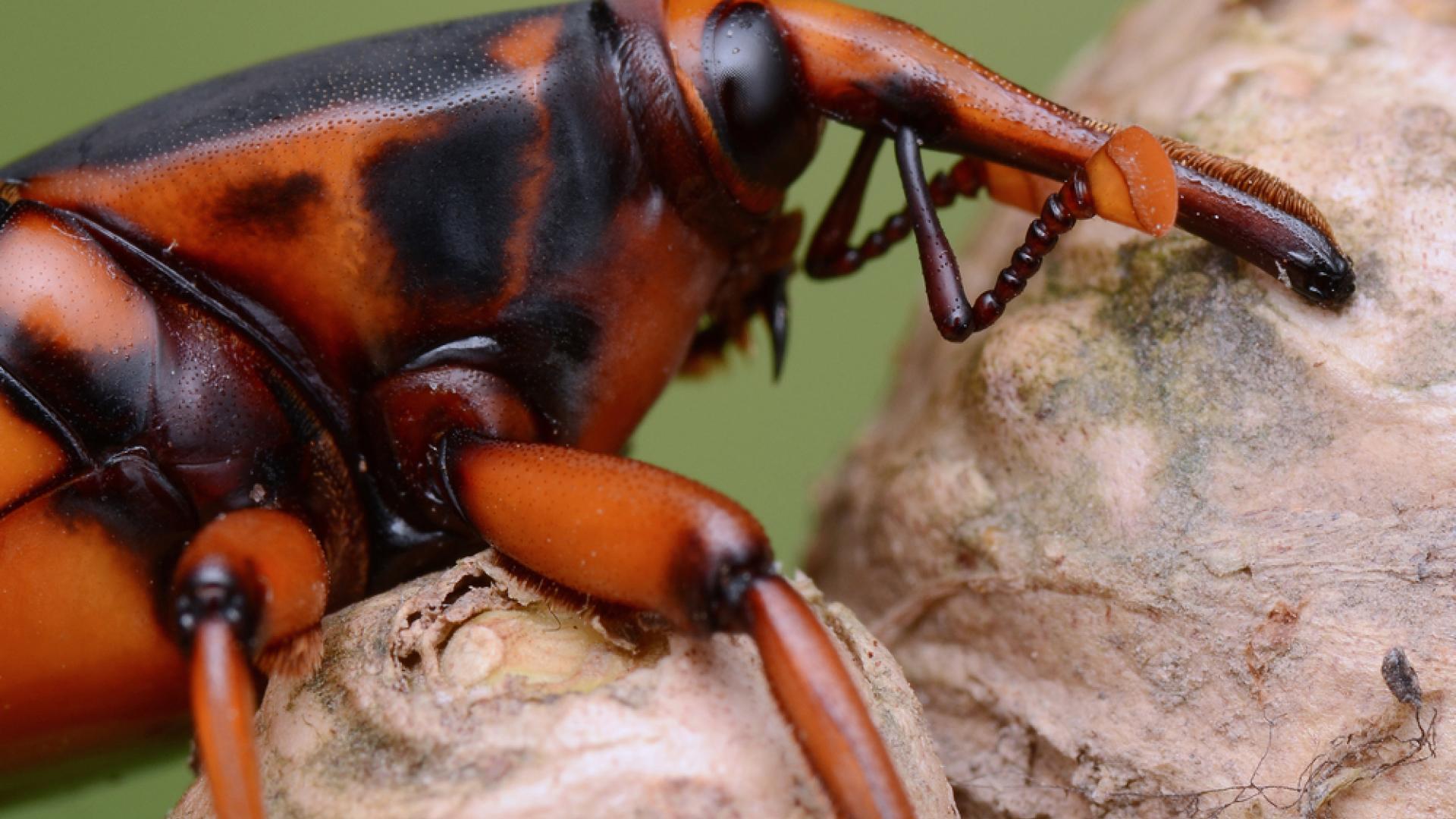The red palm weevil (Rhynchophorus ferrugineus) is a snout beetle insect originating from tropical Asia. Over the last few decades, it has spread to a large part of the Middle East, North Africa, and virtually the entire Mediterranean region. Weevil larvae, the insects at their stage of development from an egg to before their adult form, are the cause of severe and widespread damage to certain palm tree species.
The weevil larvae spend their entire four-month life cycle within the palm tree's trunk, hollowing it out from the inside until the tree dies. They are considered the most destructive pest of palms in plantations worldwide—including for coconut palms, date palms, and oil palms. Controlling the spread and pernicious effects of red palm weevils is important because date farming and crops represent an important economic activity and resource for Saudi Arabia and the region.
"Governments from many countries are committing to serious funding to tackle this plague. Palm production represents a big industry. Red palm weevils have wiped out a whole generation of trees in many countries like Malaysia, Indonesia, and Spain, so [they're] a very severe problem," KAUST Professor Khaled Nabil Salama explained.
Pictured here is a close-up of the head of the red palm weevil. The insect uses its pair of antennae and its long proboscis (nose) to detect chemical cues in the environment, such as pheromones sent by other red palm weevils. File photo.
The importance of early detection
In an effort to tackle this natural challenge, the Saudi Ministry of Environment, Water & Agriculture (MEWA) contacted KAUST to investigate new ways of detecting the red palm weevil threat at an early stage.
"When the trees are showing visible signs of distress such as a sagging canopy, it generally means that the [red palm weevil] infection is well-advanced and the likelihood of rescuing the tree very low", Dr. Anne-Françoise Lamblin, manager in the KAUST Office of Sponsored Research (OSR), pointed out. The goal is to detect the insects' presence at the earliest contagion stage possible to treat and rescue the tree.
"Everyone is trying now to solve the problem by various early detection methods," Salama noted.
The main difficulty of the problem is that the whole disease takes place inside the tree. Therefore, early detection methods focus on finding out if weevils are resident inside the tree so experts can take appropriate action and eliminate them before they kill the tree.
OSR has hosted conferences bringing together international experts to examine the red palm weevil challenge. Last year, researchers convened at KAUST for an interdisciplinary workshop to share red palm weevil knowledge and discuss engineering methods that could be applied for the early detection of the pest by targeting three main fronts: acoustic detection; olfactory chemical detection; and multi-spectral imagery analysis.
The earliest detectable signals of an infected tree come from the noise generated by the larvae when they move within the trunk while eating it. Also, as the larvae work through the inside of the tree, volatile organic compounds (VOCs) are released. Some are likely to originate from the tree being damaged and some come from larval digestion by-products, or frass. VOCs, their identification and the development of chemical sensors for them are the basis for the chemical-olfactory detection method.
Finally, as the infection progresses and the inside of the tree is eaten away, the flow of water from the roots to the canopy is impaired. The result is a higher temperature of the tree canopy, which can be observed through multispectral imagery using infrared technology.
Read the full article

